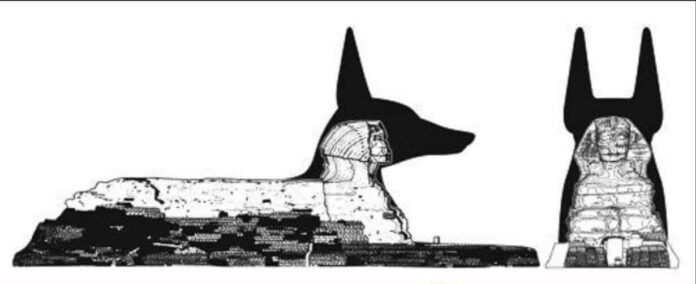Unveiling an Ancient Mystery
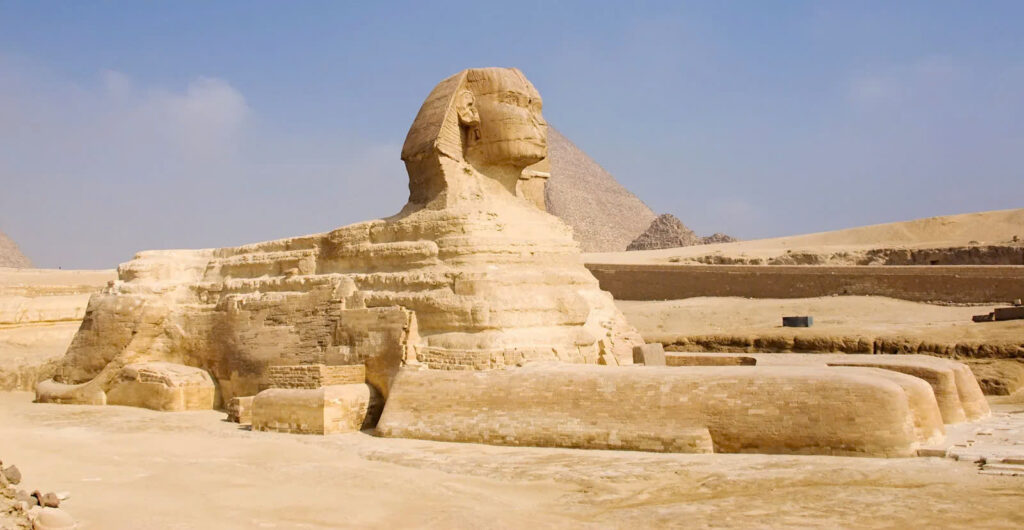
For millennia, the Great Sphinx of Giza has stood as a silent sentinel over the Giza Plateau, captivating the imagination of visitors and scholars alike. Traditionally believed to have been constructed during the reign of Pharaoh Khafre around 2500 BC, this colossal monument has long been considered a representation of the pharaoh himself. However, a controversial theory proposed by Robert Temple in his book “The Sphinx Mystery” challenges this long-held belief, suggesting a far more intriguing origin for this enigmatic structure.
The Anubis Theory: A Radical Reinterpretation

Temple’s theory posits that the Great Sphinx was originally carved in the likeness of Anubis, the jackal-headed god associated with mummification and the afterlife in ancient Egyptian mythology. According to this perspective, the human head we see today is the result of a later modification, possibly re-carved to resemble Amenemhet II, a pharaoh of the Middle Kingdom.
Evidence and Arguments
Proportional Discrepancies
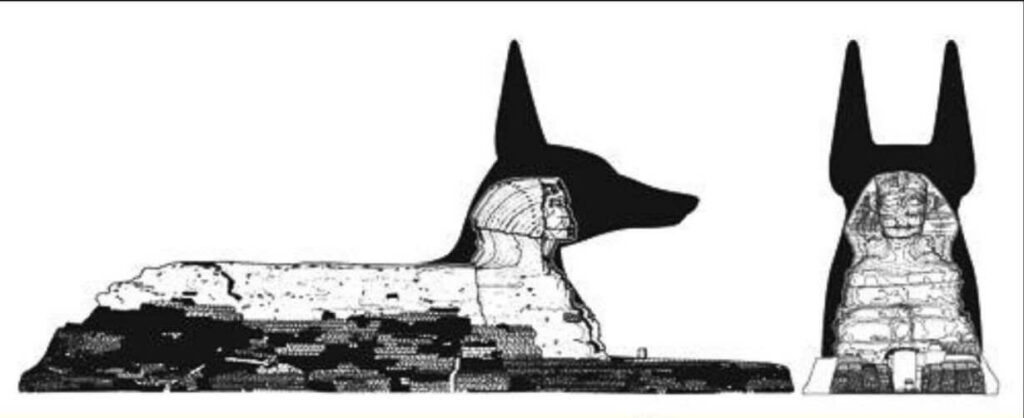
One of the key arguments supporting the Anubis theory is the apparent mismatch between the Sphinx’s head and its massive body. Proponents of this view argue that the head appears disproportionately small, suggesting it may have been re-carved from a larger original structure – perhaps the head of a jackal.
Symbolic Significance
The theory also draws on the symbolic importance of Anubis in ancient Egyptian religion. As a guardian of tombs and the necropolis, a monumental statue of Anubis would be fitting for the Sphinx’s location at the Giza Plateau, a major burial site.
Erosion Patterns and Dating
Researchers supporting the Anubis theory point to erosion patterns on the Sphinx’s body, suggesting that they indicate a much older date of construction than traditionally believed. Some even propose that the erosion could be the result of exposure to heavy rains, potentially pushing the Sphinx’s origins back to a pre-dynastic era.
Controversy and Criticism
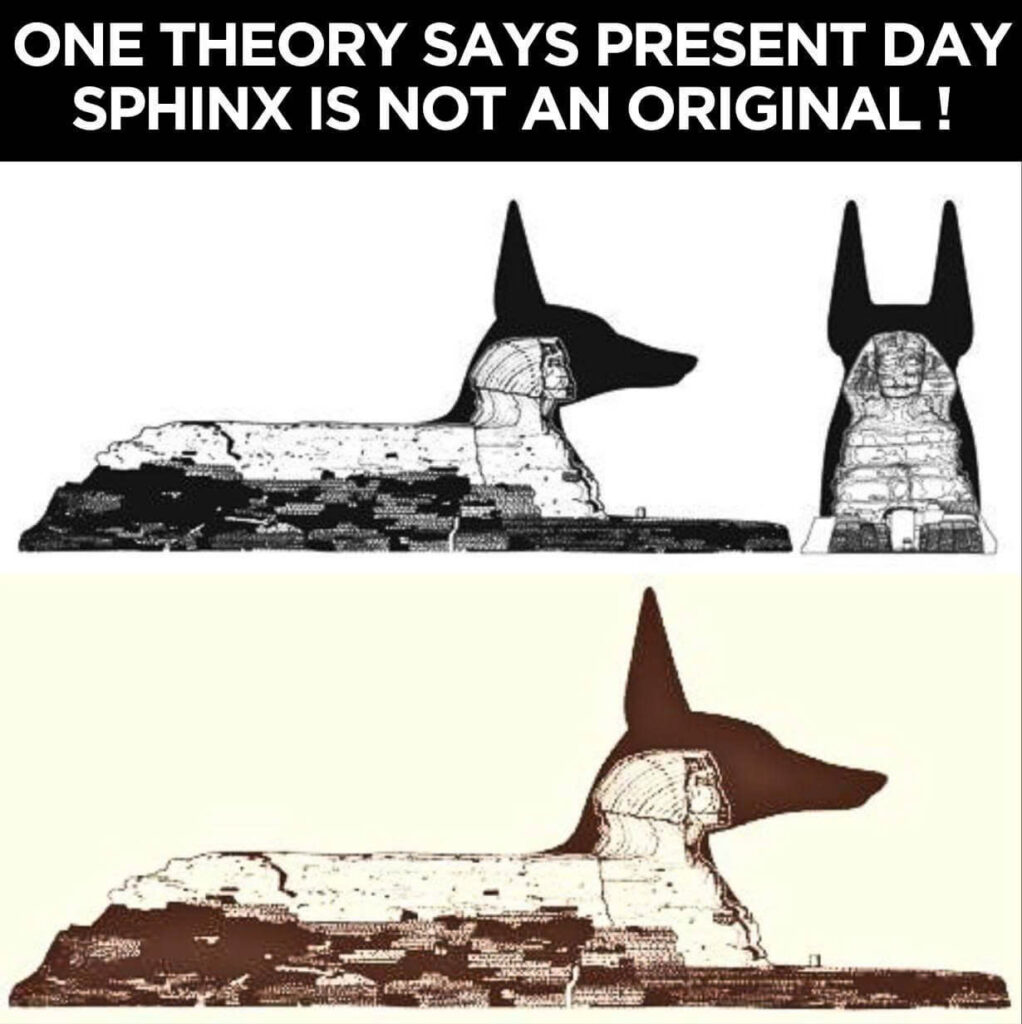
While intriguing, the Anubis theory remains highly controversial within the field of Egyptology. Critics argue that there is no direct archaeological evidence to support the claim of an original Anubis statue. Most mainstream scholars maintain that the Sphinx is an integral part of the Giza pyramid complex, constructed under Khafre’s reign without significant subsequent modifications.
Conclusion: An Enduring Mystery
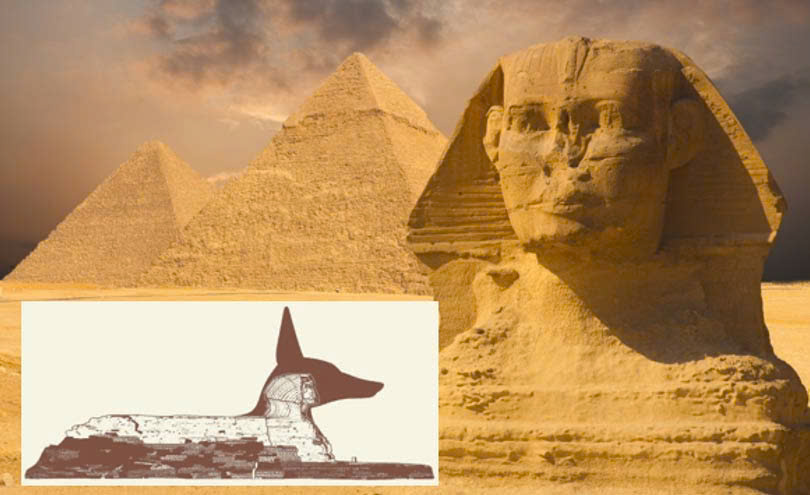
The debate surrounding the Great Sphinx’s origins highlights the enduring mystery and allure of ancient Egyptian civilization. While the Anubis theory lacks widespread acceptance in academic circles, it has reignited interest in one of Egypt’s most iconic monuments. As research continues, the Great Sphinx stands as a testament to the ingenuity of ancient builders and the enduring power of human curiosity.
Whether originally carved as Anubis or Khafre, the Great Sphinx continues to guard its secrets, challenging us to unravel the mysteries of our ancient past.
